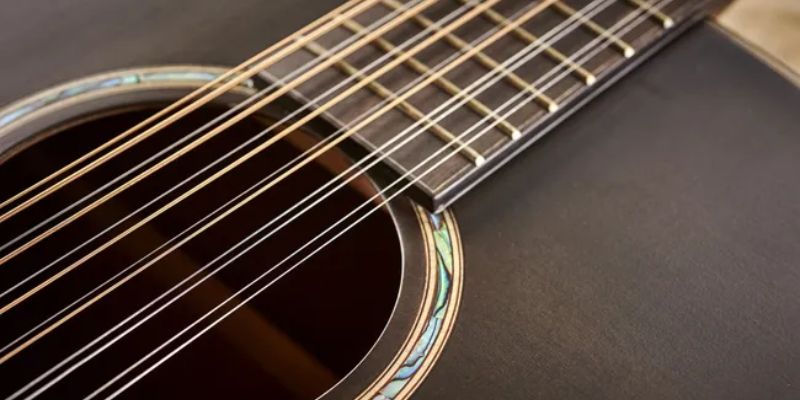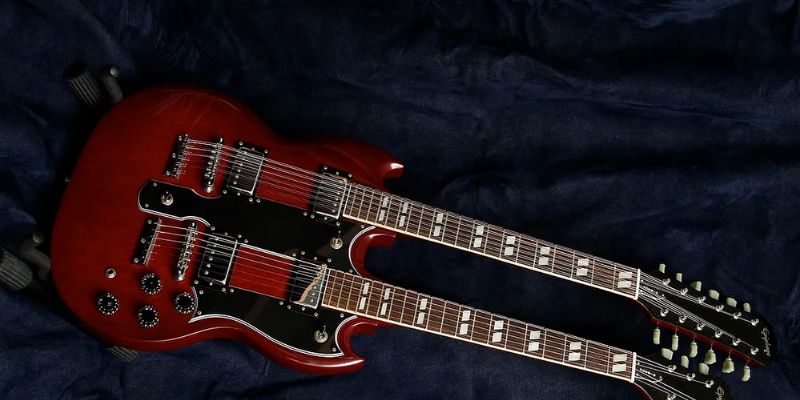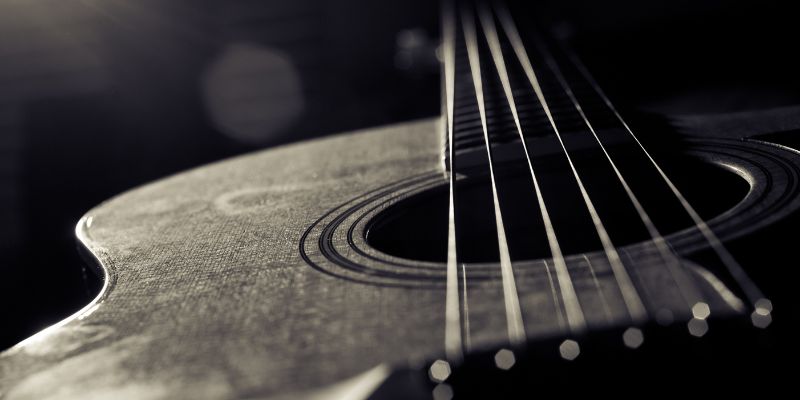Most guitars have 6 strings, and most guitarists seem to get by quite fine with that many, thank you. But – from the intro to The Eagles’ Hotel California to the iconic guitar part in Pink Floyd’s Wish You Were Here (both featuring 12-string guitars); from the 7-string, drop-tuned axes used by modern Djent/Math Rock/Prog Rock bands to the hybrid 8-string multi-scale guitar/bass used by innovators like Charlie Hunter – guitars have been clearly been strung with a multitude of other options. So, do more strings mean that a guitar sounds better, offers more options, or becomes easier to play? Let’s find out…
6+: How? Why?
The answer is the same as with most things in life: it all depends! The guitar is one of the most popular instruments in the world and finds uses in a bewildering variety of styles and genres. If you do a bit of research into its origins, you will find that early guitars were set up somewhat differently, usually with 4 ‘courses’ of strings rather than 6 individual strings (a ‘course’ being 2 strings placed very close together, so that they are plucked or strummed as one, producing a pleasant ‘chorus’ effect; mandolins are another example of this kind of stringing).

The modern 12-string guitar is an extension of this concept, featuring 6 courses of strings (rather than 12 single strings). 4 of these courses involve the second set of strings being tuned one octave higher than the primary set. This produces a very interesting sound, almost like two guitars being played at once. 12-string guitars are often used in folk and ethnic styles – but also famously in classic rock.
Modern 7- and 8-string guitars were developed specifically for heavier styles of music that required guitar players to have an extended low-frequency range on their instruments. Thus the ‘7th/8th string’ is the thickest string on the instrument and allows the player to play notes previously accessible only by bassists or piano/keyboard players. The added string also enables wider harmonic possibilities. This addition of lower strings has also prompted modern luthiers to fundamentally alter the ‘scale’ of the instrument, producing ‘fanned-fret’ or ‘multi-scale’ designs, to allow each string the best intonation for its frequency.
The multi-scale innovation then allowed some other players to fuse the guitar and the bass – these 8- and 9-string designs feature 3 bass strings and 5 or 6 guitar strings. Clearly, the level of dexterity required to play these instruments (imagine a bass line, melody, harmony all coming from the same instrument at the same time!) is orders of magnitude higher than on a normal 6-string guitar and is thus usually left to crackpot geniuses, few and far between.
Right. So Let’s Bring on the Double Necks!
Excess. Guitar players through the ages can be accused of many things – but not for avoiding that! So, when 6+ strings won’t do, why not add more necks to the instrument? Most classic rock fans will immediately recollect Jimmy Page’s double-neck electric; with a 6-string and 12-string neck on the same instrument. The story goes that Page wanted to have one instrument that would allow him to re-create the guitar parts on the classic track Stairway to Heaven when performing live. According to a feature on guitar.com, Page realized he wouldn’t be able to play this without a custom-made guitar: “I asked to get one from Gibson, because I knew it was the only way,” he said, “so it became iconic, didn’t it?”

Other virtuosos such as Steve Vai and Ron ‘Bumblefoot’ Thal have gone so far as to design triple-necked guitars (6-string, 12-string, 6-string fretless…) to allow them the versatility they craved from one instrument.
Summing Up
Even though guitars with more than 6 strings may not be used in top-40 pop and dance music (where there’s sometimes no guitar of any kind at all for that matter!), they’re still very much around in other guitar communities. What’s most intriguing about these guitars isn’t the practicality, since it’s obviously not always possible (or easy!) to use these instruments; instead, it’s the number of possibilities opened up: guitarists have been able to extract many, many new sounds – and even invent new sub-genres of music – thanks to these innovations.




